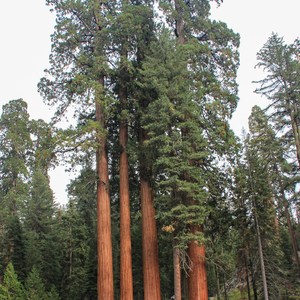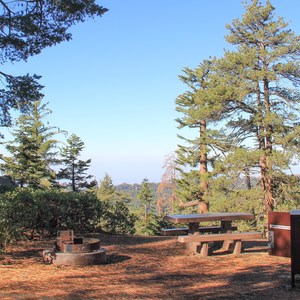You are here
The Obelisk is a 700-foot-tall granite monolith in the backcountry of Kings Canyon National Park offering excellent rock climbing and superb Sierra Nevada vistas. Climbing the Obelisk is an all-around adventure involving heavyweight backpacking with both camping gear and traditional climbing gear, navigating off-trail for extended distances, and moderate bushwhacking. The summit of the Obelisk is accessible only via fifth-class rock climbing, meaning there are no hike-ups or walk-offs. The descent demands two rappels, including one full-length 50-meter free-hanging rappel over a ledge, requiring climbing parties to use a two-rope climbing system (twins or halfs) or bring a tag line for the rappel.
It is said that the approach to the Obelisk is the crux of the climb. The hike begins at the Crown Valley Trailhead in the Sierra National Forest and climbs nearly 3,000 feet in about 8 miles to excellent camping in the Geraldine Lakes basin. (The obvious trail becomes faint and difficult to follow shortly after passing Spanish Lake about 6 miles into the hike, after which a series of reliable cairns helps to guide the way. Keep on the lookout as you move from one to another.) From the lakes, approximately 2 miles of cross-country travel remain for summit day, including extended talus scrambling and bushwhacking through moderate vegetation. Route choice is difficult and often requires selecting the lesser of two unpleasant options. Because of the challenging navigation, multiple sources of navigation information are recommended: a compass, printed maps from multiple sources (e.g. USGS and USFS), several downloaded map layers on a capable smartphone GPS app, and any other available information that may aid safe, efficient navigation in the field.
Overnighting in the vicinity of the Obelisk requires a wilderness permit, which can be reserved in advance by mail through the Sierra National Forest's High Sierra Ranger District in Prather, California. Permits may be picked up after hours in a dropbox at the ranger station if requested in advance.
The Obelisk rewards this endurance and effort, however. What begins as a scenic hike becomes truly breathtaking after climbing out of the lakes basin on the second day, with expansive vistas spanning the Palisades in the east and the rolling slopes of the western Sierra Nevada to the south. The climbing itself is on solid, high-quality granite and just plain fun. Several routes reach the top of the Obelisk, with West Face (5.7) both the easiest and the most popular. The Obelisk receives six pages of coverage in R.J. Secor's guidebook, "The High Sierra," hinting at his high opinion of the location. The climb is a worthy challenge for experienced adventurers. The remote location mandates that hopeful climbers bring equipment appropriate to a range of potential conditions while at the same time limiting unnecessary weight in the pack. Difficult off-trail terrain demands confident backcountry navigation. And technical climbing on a far-flung rock face requires solid, competent climbing skills.










Comments
Sign In and share them.